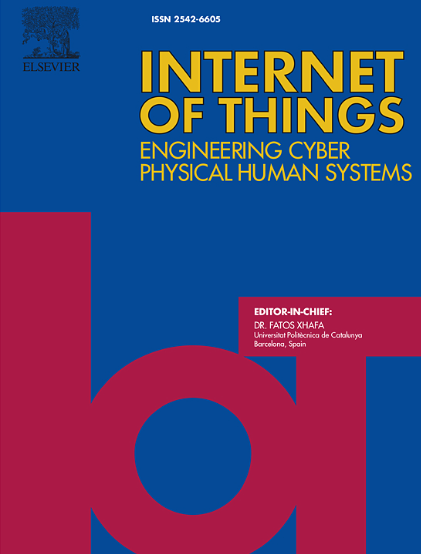Next-generation smart homes: CO2 monitoring with Matter protocol to support indoor air quality
IF 6
3区 计算机科学
Q1 COMPUTER SCIENCE, INFORMATION SYSTEMS
引用次数: 0
Abstract
Humans spend most of their time indoors, where air quality and comfort are crucial to health and well-being. Elevated CO2 levels in buildings can reduce cognitive function, discomfort, and health issues. Indoor CO2 monitoring has emerged as a key focus in the literature, particularly in residential buildings, as it can play a vital role in helping to maintain adequate ventilation rates. The growing smart home market demands seamless integration and control, which are essential for implementing IAQ sensing devices. However, interoperability barriers between platforms and devices continue to hinder smart home adoption. To address these challenges, Matter protocol is starting to appear in the market. In this work, a wireless CO2 sensor is developed based on ESP32-C6 and SCD40 and integrated into a created Matter-enabled ecosystem formed with the Home Assistant open-source platform. The utilized hardware and software enable the usage of two different wireless communication technologies, WiFi and Thread, enhancing compatibility. The study highlights the rapid and seamless onboarding of the developed CO2 monitoring device into smart home ecosystems using the Matter protocol. As a result, once the device is successfully added to the ecosystem, the measurements can be accessed and analyzed through a mobile application, forming an IoT environment.

下一代智能家居:二氧化碳监测与物质协议,以支持室内空气质量
人类大部分时间都在室内度过,空气质量和舒适度对健康和福祉至关重要。建筑物中二氧化碳浓度升高会降低认知功能、不适和健康问题。室内二氧化碳监测已经成为文献中的一个重点,特别是在住宅建筑中,因为它可以在帮助保持足够的通风率方面发挥至关重要的作用。不断增长的智能家居市场需要无缝集成和控制,这对于实施室内空气质量传感设备至关重要。然而,平台和设备之间的互操作性障碍继续阻碍智能家居的采用。为了应对这些挑战,Matter协议开始出现在市场上。在这项工作中,基于ESP32-C6和SCD40开发了一种无线二氧化碳传感器,并将其集成到与家庭助理开源平台形成的创建物质支持生态系统中。所使用的硬件和软件可以使用两种不同的无线通信技术,WiFi和Thread,增强兼容性。该研究强调了使用Matter协议将开发的二氧化碳监测设备快速无缝地导入智能家居生态系统。因此,一旦设备成功添加到生态系统中,就可以通过移动应用程序访问和分析测量结果,形成物联网环境。
本文章由计算机程序翻译,如有差异,请以英文原文为准。
求助全文
约1分钟内获得全文
求助全文
来源期刊

Internet of Things
Multiple-
CiteScore
3.60
自引率
5.10%
发文量
115
审稿时长
37 days
期刊介绍:
Internet of Things; Engineering Cyber Physical Human Systems is a comprehensive journal encouraging cross collaboration between researchers, engineers and practitioners in the field of IoT & Cyber Physical Human Systems. The journal offers a unique platform to exchange scientific information on the entire breadth of technology, science, and societal applications of the IoT.
The journal will place a high priority on timely publication, and provide a home for high quality.
Furthermore, IOT is interested in publishing topical Special Issues on any aspect of IOT.
 求助内容:
求助内容: 应助结果提醒方式:
应助结果提醒方式:


